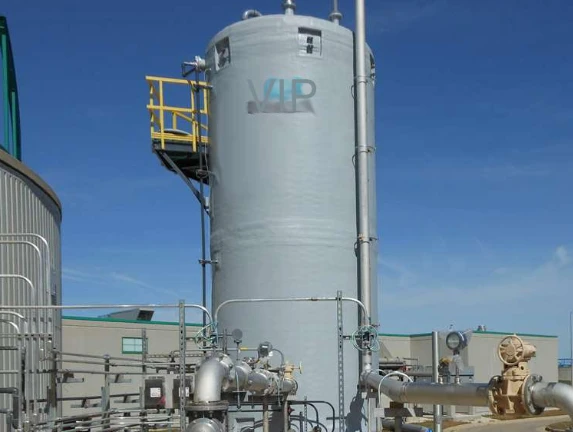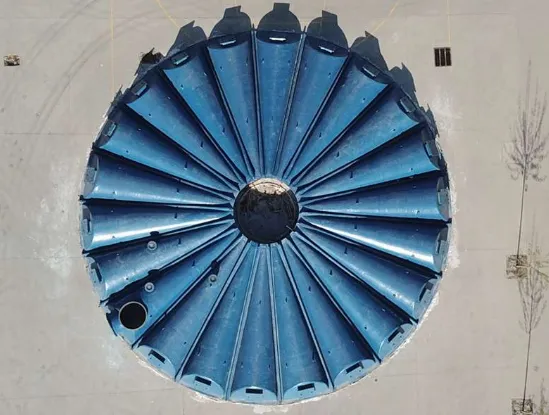
-
 Afrikaans
Afrikaans -
 Albanian
Albanian -
 Amharic
Amharic -
 Arabic
Arabic -
 Armenian
Armenian -
 Azerbaijani
Azerbaijani -
 Basque
Basque -
 Belarusian
Belarusian -
 Bengali
Bengali -
 Bosnian
Bosnian -
 Bulgarian
Bulgarian -
 Catalan
Catalan -
 Cebuano
Cebuano -
 China
China -
 China (Taiwan)
China (Taiwan) -
 Corsican
Corsican -
 Croatian
Croatian -
 Czech
Czech -
 Danish
Danish -
 Dutch
Dutch -
 English
English -
 Esperanto
Esperanto -
 Estonian
Estonian -
 Finnish
Finnish -
 French
French -
 Frisian
Frisian -
 Galician
Galician -
 Georgian
Georgian -
 German
German -
 Greek
Greek -
 Gujarati
Gujarati -
 Haitian Creole
Haitian Creole -
 hausa
hausa -
 hawaiian
hawaiian -
 Hebrew
Hebrew -
 Hindi
Hindi -
 Miao
Miao -
 Hungarian
Hungarian -
 Icelandic
Icelandic -
 igbo
igbo -
 Indonesian
Indonesian -
 irish
irish -
 Italian
Italian -
 Japanese
Japanese -
 Javanese
Javanese -
 Kannada
Kannada -
 kazakh
kazakh -
 Khmer
Khmer -
 Rwandese
Rwandese -
 Korean
Korean -
 Kurdish
Kurdish -
 Kyrgyz
Kyrgyz -
 Lao
Lao -
 Latin
Latin -
 Latvian
Latvian -
 Lithuanian
Lithuanian -
 Luxembourgish
Luxembourgish -
 Macedonian
Macedonian -
 Malgashi
Malgashi -
 Malay
Malay -
 Malayalam
Malayalam -
 Maltese
Maltese -
 Maori
Maori -
 Marathi
Marathi -
 Mongolian
Mongolian -
 Myanmar
Myanmar -
 Nepali
Nepali -
 Norwegian
Norwegian -
 Norwegian
Norwegian -
 Occitan
Occitan -
 Pashto
Pashto -
 Persian
Persian -
 Polish
Polish -
 Portuguese
Portuguese -
 Punjabi
Punjabi -
 Romanian
Romanian -
 Russian
Russian -
 Samoan
Samoan -
 Scottish Gaelic
Scottish Gaelic -
 Serbian
Serbian -
 Sesotho
Sesotho -
 Shona
Shona -
 Sindhi
Sindhi -
 Sinhala
Sinhala -
 Slovak
Slovak -
 Slovenian
Slovenian -
 Somali
Somali -
 Spanish
Spanish -
 Sundanese
Sundanese -
 Swahili
Swahili -
 Swedish
Swedish -
 Tagalog
Tagalog -
 Tajik
Tajik -
 Tamil
Tamil -
 Tatar
Tatar -
 Telugu
Telugu -
 Thai
Thai -
 Turkish
Turkish -
 Turkmen
Turkmen -
 Ukrainian
Ukrainian -
 Urdu
Urdu -
 Uighur
Uighur -
 Uzbek
Uzbek -
 Vietnamese
Vietnamese -
 Welsh
Welsh -
 Bantu
Bantu -
 Yiddish
Yiddish -
 Yoruba
Yoruba -
 Zulu
Zulu
FRP Shell Solutions Durable Fiberglass & GRP Shell Products
- Overview of FRP, Fiberglass, and GRP Shells in Modern Applications
- Technical Advantages: Strength, Durability, and Cost Efficiency
- Performance Comparison: Leading Manufacturers and Key Metrics
- Customization Options for Industry-Specific Requirements
- Case Studies: Real-World Implementations Across Sectors
- Environmental Impact and Sustainability Considerations
- Future Trends in FRP Shell Manufacturing and Adoption

(frp shell)
FRP Shell Solutions for High-Performance Industrial Needs
FRP (Fiberglass Reinforced Plastic), GRP (Glass Reinforced Polyester), and fiberglass shells have become critical components in industries demanding corrosion resistance, structural integrity, and lightweight designs. Market analysis by Grand View Research projects a 6.2% CAGR growth for FRP products through 2030, driven by infrastructure development and energy sector demands. These composite shells outperform traditional materials in chemical exposure environments, with 40% lower maintenance costs over a 10-year lifecycle compared to steel alternatives.
Technical Superiority in Composite Engineering
Modern FRP shells demonstrate exceptional mechanical properties:
• Tensile strength: 300-500 MPa (vs. 250-400 MPa for aluminum)
• Thermal stability: -40°C to 120°C operational range
• Weight reduction: 60-70% lighter than equivalent steel structures
Advanced manufacturing techniques enable wall thickness precision of ±0.25mm, while UV-resistant gel coatings provide 25-year surface warranties in outdoor installations. The dielectric properties of GRP shells eliminate electrical conductivity risks, making them ideal for power transmission applications.
Manufacturer Comparison: Specifications and Value Propositions
| Vendor | Thickness Range (mm) | Max Diameter (m) | Temperature Rating | Lead Time (weeks) |
|---|---|---|---|---|
| Composite Solutions Inc. | 3-25 | 4.5 | -50°C to 140°C | 6-8 |
| FiberTech Global | 2-20 | 3.8 | -30°C to 110°C | 4-6 |
| GRP Engineering Ltd. | 5-30 | 5.2 | -60°C to 160°C | 8-10 |
Tailored Solutions for Sector-Specific Challenges
Customization capabilities address unique operational requirements:
• Chemical processing: Halar®-lined shells with 99% acid resistance
• Offshore applications: Buoyancy-enhanced designs (1.25g/cm³ density)
• Architectural use: Fire-retardant grades meeting ASTM E84 Class A
Modular connection systems enable rapid field assembly, reducing installation time by 35-40% compared to welded steel alternatives. Custom color matching and surface textures maintain aesthetic consistency in visible installations.
Proven Performance in Critical Infrastructure
A 2023 installation for a Middle Eastern desalination plant utilized 1,200+ GRP shell units with:
• Zero corrosion incidents after 18 months of saltwater exposure
• 92% reduction in maintenance labor hours
• 2.3-year ROI through extended service intervals
In transportation infrastructure, fiberglass shells for bridge enclosures demonstrated 98.7% UV resistance retention after 5 years of exposure, per independent testing by Materials Analysis Group.
Sustainable Manufacturing and Lifecycle Management
The latest production methods reduce energy consumption by 28% compared to 2018 benchmarks. Closed-molding techniques capture 99% of VOC emissions, while recycled glass content now reaches 40% in standard formulations. End-of-life recovery programs achieve 85-90% material reuse rates through advanced separation technologies.
Advancing FRP Shell Technology for Next-Generation Demands
Emerging developments include:
• Smart embedded sensors for structural health monitoring
• Nano-enhanced resins improving impact resistance by 150%
• Automated layup systems achieving 0.05mm dimensional tolerances
These innovations position FRP and GRP shells as essential components for sustainable industrial development, with global market value projected to exceed $12.7 billion by 2028 (Transparency Market Research).

(frp shell)
FAQS on frp shell
Q: What is an FRP shell and what are its primary uses?
A: An FRP (Fiber-Reinforced Plastic) shell is a lightweight, durable structure made from composite materials. It is widely used in construction, automotive, and marine industries for protective or structural purposes. Its corrosion resistance and high strength make it ideal for harsh environments.
Q: How does a fiberglass shell differ from a GRP shell?
A: A fiberglass shell and GRP (Glass-Reinforced Plastic) shell are essentially the same, both using glass fibers in a polymer matrix. The term "GRP" is more common in Europe, while "fiberglass" is often used in North America. Both offer similar benefits like durability and weather resistance.
Q: What are the advantages of using GRP shells in industrial applications?
A: GRP shells provide excellent strength-to-weight ratios, corrosion resistance, and thermal insulation. They are customizable for complex shapes and require minimal maintenance. These properties make them suitable for chemical plants, water treatment facilities, and roofing systems.
Q: Can FRP shells be repaired if damaged?
A: Yes, FRP shells can be repaired using resin, fiberglass patches, or epoxy fillers. The process involves cleaning the damaged area, applying the repair material, and curing it. Proper repairs restore structural integrity and extend the shell’s lifespan.
Q: Are fiberglass shells fire-resistant?
A: Standard fiberglass shells are not inherently fire-resistant but can be treated with fire-retardant resins or coatings. They meet specific fire safety standards when modified appropriately. Always verify certifications for fire-rated applications.
Latest news
-
FRP Shell Solutions Durable Fiberglass & GRP Shell ProductsNewsMay.22,2025
-
GRP Grating Lightweight & Durable Fiberglass Floor Grating SolutionsNewsMay.22,2025
-
High-Strength GRP/FRP Duct Systems Corrosion-Resistant & DurableNewsMay.22,2025
-
Durable & Corrosion-Resistant Fiberglass Chemical Tanks FRP SolutionsNewsMay.21,2025
-
Fiberglass Pipe Insulation Fittings High-Temp & Energy-Efficient SolutionsNewsMay.21,2025
-
High-Pressure Fiberglass Piping Systems Durable & Corrosion-Resistant FRP SolutionsNewsMay.20,2025









